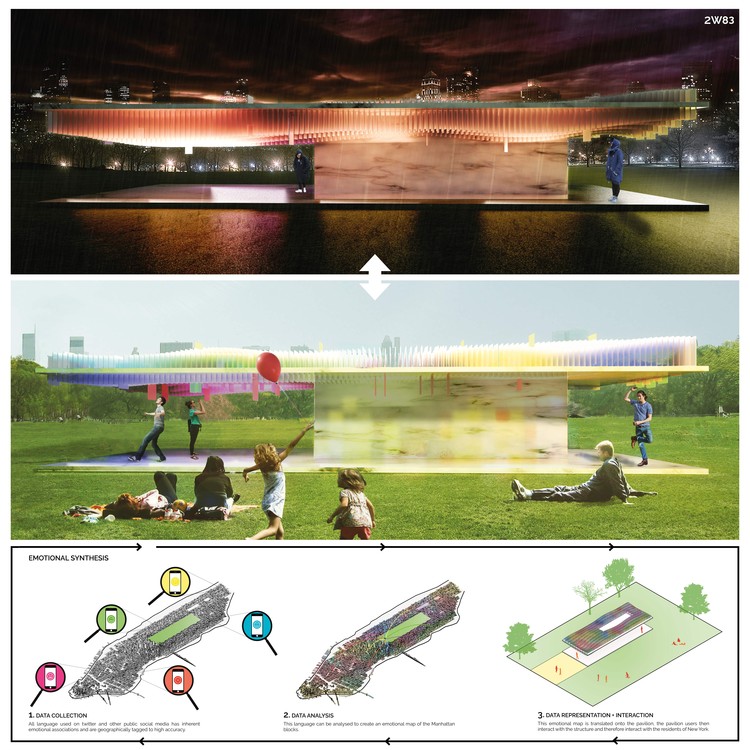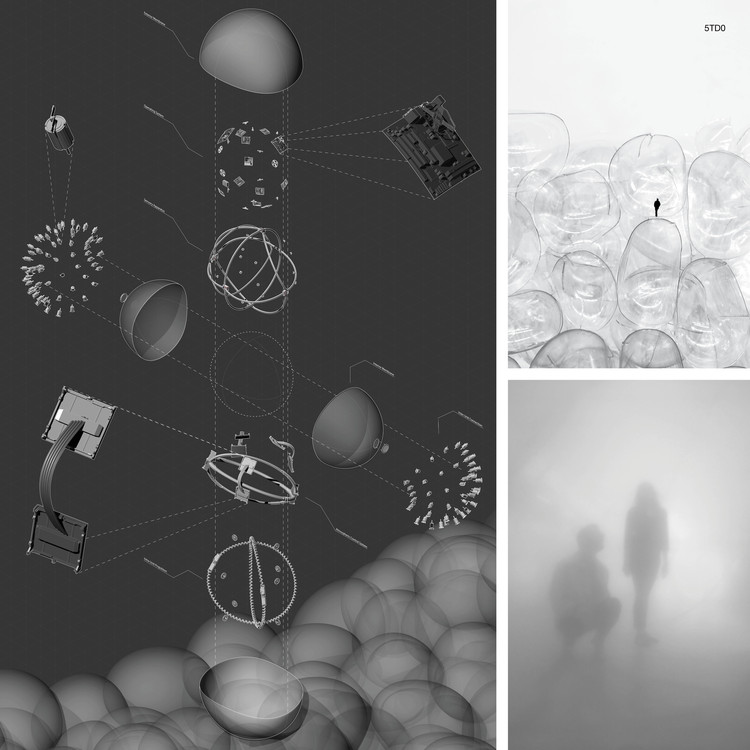
Bubble Design Competitions has unveiled the winners of their inaugural international competition, challenging teams to “Eliminate Loneliness Through Design.” Organized in response to the global crisis of loneliness and isolation in the modern age, the competition aimed to demonstrate the power of architecture and design to tackle society’s pressing issues.
The three winners, seven honorable mentions, and thirty finalists range radically in scale and approach, from a strategic infill scheme in Tokyo to an initiative that uses recycled plastic modules to activate public squares.
The winning schemes were judged by an international jury including Anna Blinova (Art Director, VIGO), Craig Martin (Professor of Architecture, University of Central Lancashire & Associate Professor Climate Design TU Delft), Rob Roggema (Professor of Sustainable Spatial Transformations at the Knowledge Centre NoorderRuimte, Hanze University Groningen), and Tom Jefferies (Professor of Architecture, Manchester School of Architecture).
Below, we have republished the winning projects and honorable mentions for your study. For more ideas and information, visit Bubble’s official website here, or follow their Instagram here.
First Place
From Eliminating to Elevating: Tokyo Loneliness Tree Hole Plan - Gandong Cai, Mingjie Cai / USA

Description: We propose a plan of constructing Urban Tree Hole around Tokyo that provides small spaces in the city that those lonely individuals can enjoy being with themselves, with space, and with loneliness. In our proposal, there are three typologies of Urban Tree Hole being inserted into Shibuya, the downtown of Tokyo, by either reinvigorating redundant store on the street side, creating a corridor between buildings, or excavating underground space.


Second Place
Let it Rain - Dominique Cheng / Canada

Description: When it rains, we intuitively look for some form of protection. Moments as such are often fleeting in nature and rarely opportunities for connection. However, what if we allow the fundamental laws of attraction and some degree of chance to dictate the boundaries of social interaction. Umbrellas are conventionally used singly in isolation but is there an opportunity to reimagine this everyday apparatus as a catalyst for connection with a simple modification that would allow them to attach to each other ad infinitum? Makeshift gathering spaces could form freely simply by the result of our proximity to one another.


Third Place
Mind Craft - Jan Sikora, Ewa Siostrzonek, and Katarzyna Maliszewska / Poland

Description: MindCraft is a way to let people design their own environment manually from scratch. You can choose shapes, colors assigned to specific features and build together for yourselves and for others. The blocks are made from recycled plastic and are free to take in places located around the cities, next to public spaces. Some of them are so big, that building a structure is possible only with the help of others. Cooperation, which is the main pillar of the game, arise naturally but bonds the most. The spaces which are being created are fluent, always changing. What happens later inside made objects is up to the people. Our predictions include workshops, exhibitions, exercising, meditating and entertainment like concerts or public events.


Honorable Mentions
Barrow Forever - Tien Chen / USA



The Paradox of Our Existence - Michelle Antonorsi / USA



SYNTHESIA - James Killeavy / UK



Pneumatic Archives of Subjectivities and Imaginaries - Kane Hassebrock, Nicholas Raap, Jake Spangler, Megan Zeien / USA



Mori - Amanda Gunawan, Joel Wong / USA



The Maze - Zichun Huang / USA



Are you…? - Vlad Olaru and Andra Ioana Dragan / Romania



































